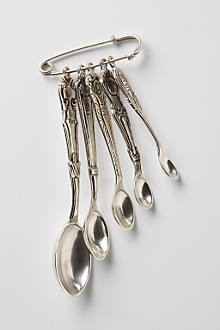 From December 27th – January 3rd, the Hampton Court Palace kitchens in London will be open to the public and cooking up historic Tudor cuisine:
From December 27th – January 3rd, the Hampton Court Palace kitchens in London will be open to the public and cooking up historic Tudor cuisine:
“The Tudor kitchens at Hampton Court Palace are famous throughout the world for being those of King Henry VIII.
In fact they continued to be used as Royal Court kitchens for a further two hundred years, feeding the tables of Tudor, Stuart and Georgian monarchs and their many courtiers…For the last five years, they have been home to a fascinating research project run by Historia food archaeologists who regularly bring the kitchens to life experimenting with traditional recipes, ingredients and cooking methods to prepare feasts fit for a king!”
The New York Times follows in the footsteps of famous French gourmand Alexandre-Balthazar-Laurent Grimod de la Reynière, and takes us on a culinary journey through 19th century Paris
“Starting in 1803, Grimod, whose family fortune had largely been lost during the Revolution, financed his voracious appetite by writing a series of best-selling guidebooks to the culinary wonders of Paris — its famous delicatessens, pâtissiers and chocolatiers — including the first reviews of an alluring new institution called le restaurant…One of the most exciting things about the Almanachs is that they include detailed gastronomic walking tours of Paris, called “nutritional itineraries” — each one a vivid window onto the past.”
Grimod’s favorite chocolate, Debauve & Gallais, can be acquired this side of the Atlantic at their shop in New York City.
Cooking with the Caliphs analyzes a medieval cookbook from “the court of 9th century Baghdad”:
“A little over a thousand years ago, an Arab scribe wrote a book he titled Kitab al-Tabikh (The Book of Recipes)… The book has come down to our time in three manuscripts and fragments of a fourth—and what a treasure it is. These are the dishes actually eaten by the connoisseurs of Baghdad when it was the richest city in the world.”
The recipes in the article sound amazing. They’re fascinating because they use ingredients common to 19th century American cooking, like citron and rosewater. I think I’m going to have an ancient Middle Eastern dinner party before too long.





 \
\





